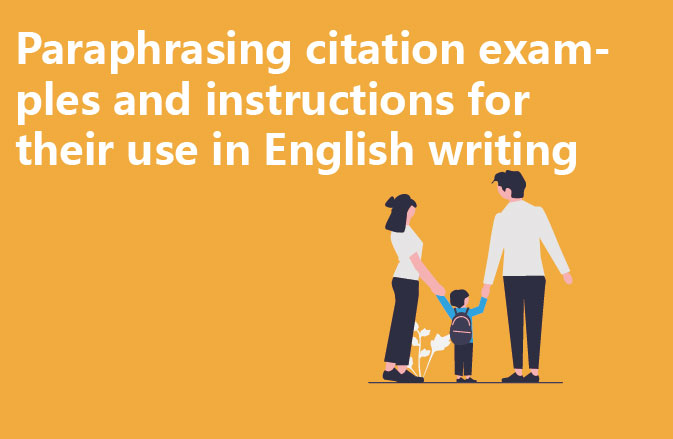This article introduces Paraphrasing and citing in the process of writing English academic papers, aiming at helping to improve the standard of writing and avoiding writing content that contradicts the original author’s viewpoints.
I. What is Paraphrasing?
In English academic writing, we may encounter situations where we need to summarise or rewrite other people’s ideas into our own language. This is when we can use the technique of Paraphrasing, which is to describe someone else’s words or ideas in as similar a way as possible to give your essay more depth and uniqueness, and at the same time effectively avoid plagiarism or misunderstanding of the original text.
How to do Paraphrasing?
To do Paraphrasing, we need to learn and master the following formats:
1. For papers involving only a single author: the format is “author’s name (year of publication) + verb + point to be paraphrased”. For example, Henninger (2016) first introduced the concept of defining SFC as comprehensive. This approach is suitable for situations where only a small amount of content of an author and his/her work needs to be mentioned. Note, however, that if too many references to the same author of the source have been cited, try to use the latter approach so as not to give the impression of repetition.
2. Papers linked to multiple authors: In this case, you should follow the format “Author A’s last name and Author B’s last name (year of publication) + verb + the point you want to convey. For example: Min and Ko from China discovered the SFC concept in 2017 and the SFC industry only existed in 2015. This style of writing is mainly applied when you need to cite two or more related papers, which allows readers to better understand and distinguish the contributions of these papers.
3. papers involving three or more authors: what you need to use is the “last name of the first author as well as et al…(year of publication publication) + verb + the point you want to paraphrase” format. as a chestnut, at the end of 2017 Castro-L6pez and his coauthors started to focusing on the impact on SFC of the environmental problems caused by the production of clothes.
4. ensemble paper: format “author name for paper A (paper string ayears clay published article); author name for paper B (year of paper publication); author name for paper x (year of paper publication)) Verbal paraphrased viewpoint.” format. As an example: the concept of SFC was first introduced by Henninger et al. in 2016, while Blazquez et al. elaborated on it again in 2020, and finally the three fashionable concepts of greenness, ecology, and morality were introduced by Castro-L6pez et al. and became the basis of the existing SFC theory. If you want to cite papers from different authors’ periods at once, then this format will be very convenient and quick.
Cautions:
a. In multiple papers, write from old to new in chronological order; for example, like in the example above, those numbers are in chronological order. So make judgements in the text based on the year to better distinguish who the author was at the time.
b. Document X represents the latest paper in your stack;
c. If there are multiple authors involved in a citation, connect them with commas;
d. The “and” goes before the author of the last paper.
For example, if you are citing “Henninger et al. (2016), Blazquez et al., (2020) and Castro-L6pez et al., (2021)”, then “and” should be placed before “Castro-L6pez et al., (2021)”.
Returning to the original question, here are a few tips on how to write a good Paraphrasing:
1. choose only words that summarise the meaning of the original text and do not add extra details to avoid changing the original meaning.
2. Make sure that the sentences are fluent, conform to English grammatical conventions, and are spelled correctly to prevent low-level errors.
3. the content after Paraphrasing should be concise and clear, do not be redundant and cumbersome, do not run off the topic or deviate from the theme.
I hope that this article can help you better master the skills of Paraphrasing and citing papers, improve the quality of papers, and jointly promote the development of academic research.




